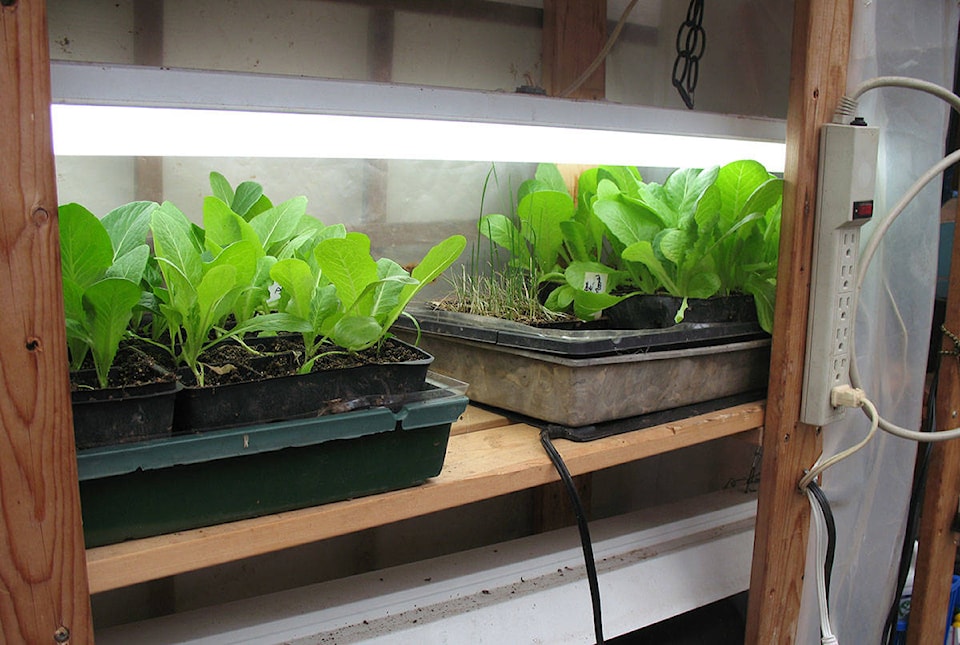By Mary Lowther
Those of us with raised beds can take advantage of getting into our gardens when they’re still soggy from winter rain because raised beds won’t become compacted when the gardener walks in the paths beside them. Leeks I sowed under lights inside can be transplanted outside and broad beans, mustard and corn salad can be sown outside now.
Lettuce grown under lights inside should do well under a cold frame, as should spinach, pak choi and radish when sown under a cold frame or plastic tunnel. I’m preparing the soil a little differently this early. Because my compost harbours hordes of slugs and wood bugs and their eggs, I’m not going to spread compost over the beds to be planted now because that would only encourage them to gorge at my freshly-planted buffet. I’ll wait till it’s drier to spread compost so the sun can dry it out and maybe a few accommodating birds will do their part and chomp up the bugs.
Right now I’ll cut down any cover crop, toss it onto the compost heap and spread organic fertilizer at the rate of four litres per hundred square feet and rake that in lightly. We’ll be eating the transplanted lettuce in a week and as I transplant them now, I’ll sow more seed in flats inside.
The nice thing about this time of year is that there’s not much demand on my time and it’s not too cold outside, so on days when it’s not raining I can tend to the espaliered fruit trees. The awning over the nectarines needs repairing before leaves sprout so they don’t get wet and succumb to peach leaf curl. All the fruit trees need pruning and tying to the wires, and this is a good time to girdle their trunks with Tanglefoot. This dandy stuff stays sticky all summer, preventing all kinds of marauding, crawly things including those clever little ants that carry aphids up to tender new growth where the latter destroy these areas and provide their bosses with honeydew. David calls them squatters.
Aphid infestation causes leaves to curl and damages new growth so fruit won’t grow to its potential. Last year I didn’t get around to smearing on the Tanglefoot so as I saw the leaves curling up, full of aphids, I pruned off the new growth. Evidently the trees weren’t happy with the onslaught because the result was still poor fruit development, especially the cherries. So right now when there aren’t many pressing chores, I’ll get out the Tanglefoot on a dry day. I learned the hard way, as usual, to don a pair of throw away gloves first because there’s no way to avoid smearing oneself with that sticky stuff in the process.
Please contact mary_lowther@yahoo.ca with questions and suggestions since I need all the help I can get.
